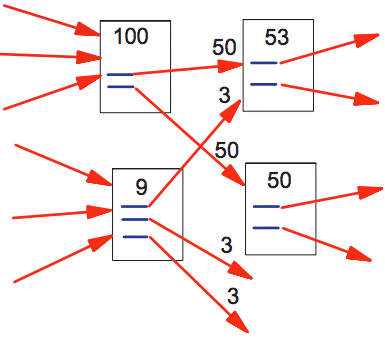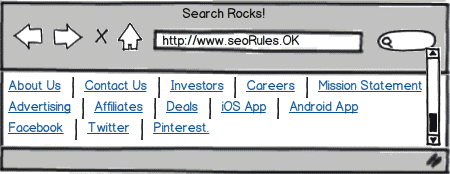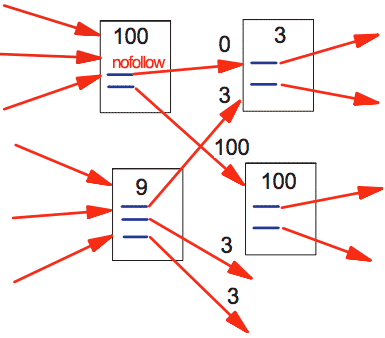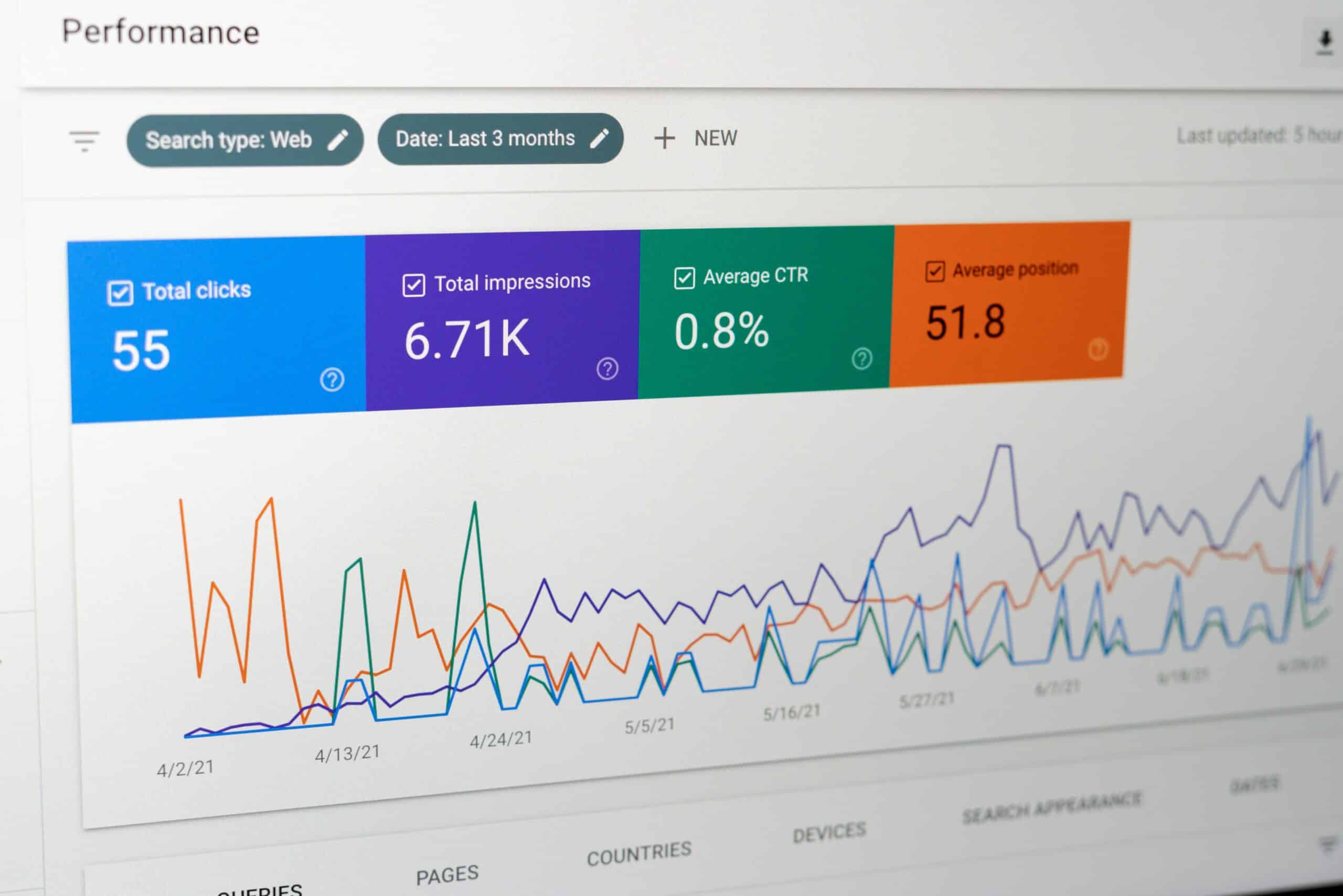SEMpost reported this week that some googlers stated:
“PageRank Sculpting still doesn’t work, which it hasn’t for over six years“
Like a lot of what rank and file Googler’s say, this is an example of bleating the mothership message, without either fully understanding, or simply being disingenuous.
What Was PageRank Sculpting?
As the vast majority of SEO practitioners haven’t been in search for six years, let me recap a bit. In the original specification of PageRank, written by Larry Page while at Stanford way back in 1998, it was explained thus:

In this example the page in the top left has 100 ‘arbitrary PageRank’ points and two outlinks. The PageRank is divided equally between those two links. The page on the bottom left has 9 ‘arbitrary PageRank’ points, and three outgoing links, again you can see that score is divided equally between them.
As the page in the top right receives one link from each of those pages, it receives (100/2)+(9/3)=53 points. The page on the bottom right only has one link from the top left, therefore has 50 points.
In reality, it wasn’t that simple as the location of the link on the page impacted the PageRank passed through (logic dictates that links hidden in the bottom right of the footer are less important than a navigational link, or a prominent in-content link.
But What About the Sculpting?
When the nofollow attribute was introduced it was to counter comment spam predominantly – and in its original incarnation it simply ignored the allocation of PageRank to the tagged link. An important distinction here is that google still “follow” the link, but they assign no weight to it either in anchor text attribution or PageRank equity.
In the example above, imagine that the first link on the top right is no-followed, 100% of the PageRank would flow through the second link, meaning that the 100 points would go to the page on the bottom right.
Back in June 2009 (AKA the paleolithic period of SEO history) Matt Cutts announced that Google had made a change, and were no longer applying “increased” PageRank to the remaining links, they were simply discounting the amount that would have passed through that specific link.
Essentially you were sacrificing that PageRank equity. It disappeared. Ceased to exist. Vanished. Pooooomf.
Alright, so how do I it Then?
This is a subject we tackled in the aftermath of the original announcement 6+ years ago. As happens a lot in SEO, the perfect solution works for both search engine crawlers and human beings: Reduce your on page links as far as you can within the parameters of User Experience and Information Architecture.
Lets say your average site contains 100 links on the homepage – this might include links such as; about us, investors, careers, media, advertising, affiliates, terms and conditions, cookie policy, privacy disclaimer, terms of service, mobile app links and so on.

Thats 11 links I’ve just listed, all of which you could combine into one intermediate page that links to each of those. Guess what, if your page had 100 links to begin with, you’ve just increased the total PageRank flow to the remaining pages by a cool 10%.
Less is More
In PageRank distribution, that mantra really is the case. The less links you have on any given page, the higher the percentage of strength flows through the remaining links. In short, you’re not diluting them with links that don’t need to be there.
How do I Decide What to Remove?
I like to think of pages by “search value”. Where a page is no, or limited search value, I try and limit those links as much as is possible. My definition of pages of no search value is simple:
“Am I seeking these pages to rank for terms that are important to my business? Furthermore, even if the page is of value in the SERPs, is there sufficient search value around its terms to warrant softening the PageRank that flows to the other pages?”
If the target page fails that sense check, dont link to it. Period. For the record, its a similar mindset that I approach site structure & Panda/thin content issues, but thats a side point.
Next Steps:
Take a look at your site, analyze each and every link on each of your site templates. Be ruthless. Trim the fat as much as possible, remove every link to pages that you possibly can where the target is considered to be of low search value.
Even if you’ve done this before, its a good idea to revisit it every couple of months, as Product and Merchandising people often work with the opposite mindset – where “more is more”.



